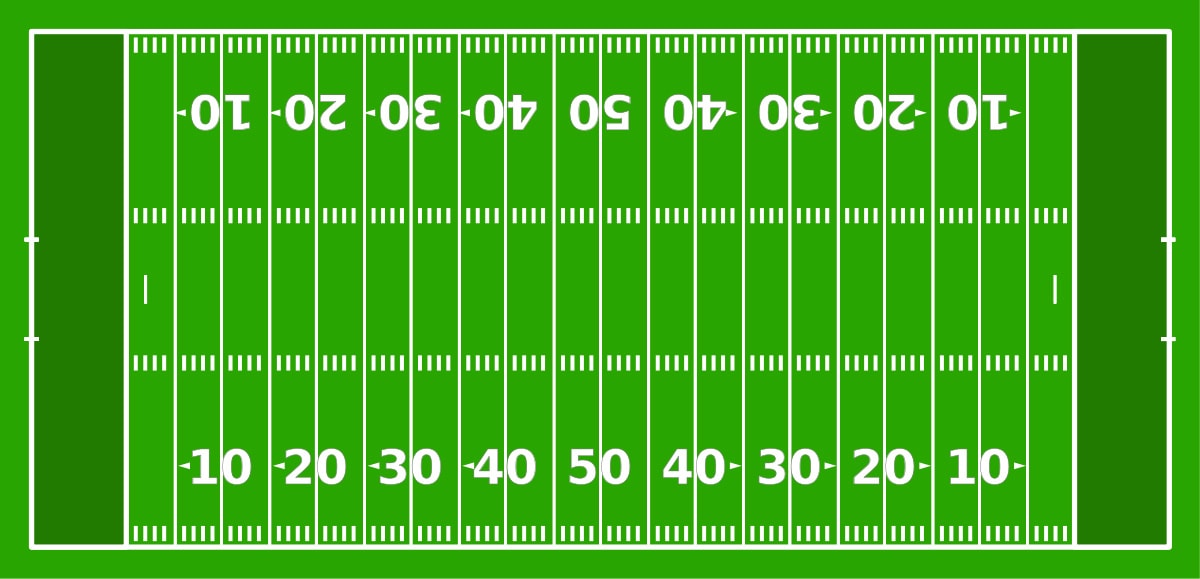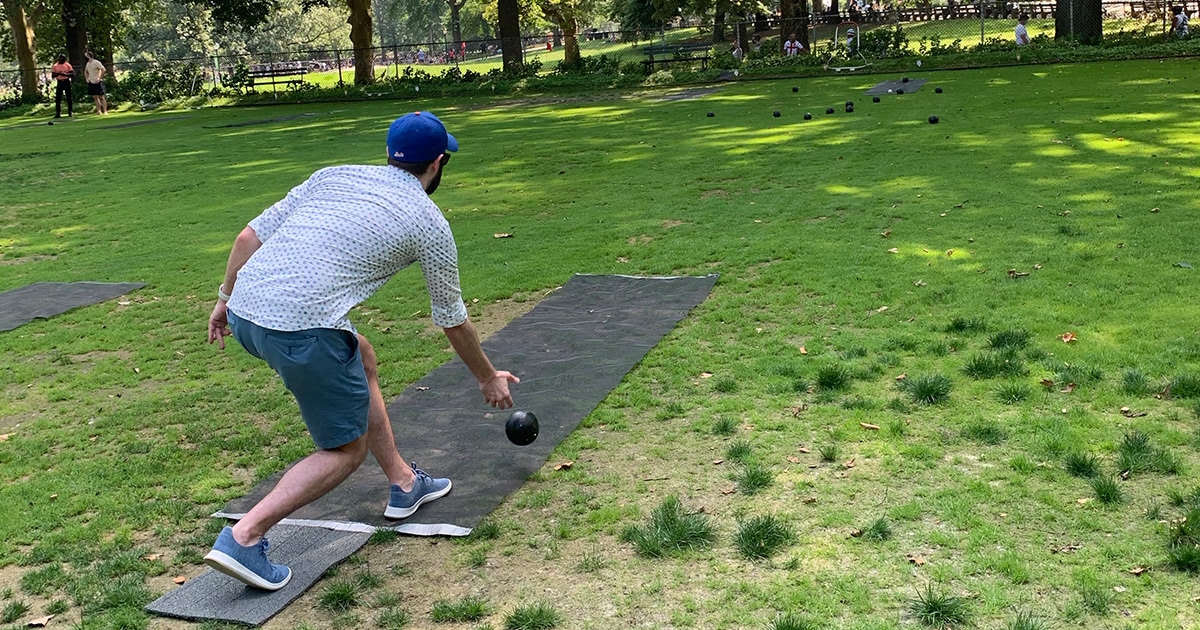The first thing to know about the Super Bowl and American Football (or “Football” as you will now call it) in general is that the rules are relatively complex and what you read below is by no means going to give you a complete guide to understanding what happens on Sunday.
It will, however, I hope, guide you in the right direction to enjoying what you see, and allow you to cheer once (or maybe twice) at the correct time.
The aim of the Super Bowl
Just like any other sport, the aim of the game is to score more points than the other team before the time runs out (4 quarters of 15 minutes, with the clock stopping a lot).
This leads us nicely to:
How points are scored in the Super Bowl
There are two main ways (again, this is just the basics for all of you people who are about to jump in and tell me that I missed things) to score points:
A touchdowwwwwn! Run the ball over into the “end zone” (picture below) and you score 6 points. Unlike rugby, you do not have to place the ball down, and instead, you need to imagine a wall that exists the width of the field at each end before the end zone. Break that wall with the ball, and you're in.
A field goal. At any time, the offensive team (the team with the ball) can decide to kick. They throw the ball back to one guy, who places it on the ground vertically, and another guy runs in and tries to kick it through the fork. If the referees either side of the goal put their hands up “It's gooooood!” for 3 points.

So why don't they just go for touchdowns as long as they can? That's because of
How possession works in football
In Football, there is always an offensive team and a defensive team. They are actually made up of separate players from each team, that's why there's so many people on the sideline.
If you've got the ball, you're the offense and you get 4 “downs” to attempt to run the ball forward. Your aim is to get a touchdown, but in the short term your aim is to get the ball past the “First Down Line” (which is the yellow line you see on the TV). When you first take possession, you are at “1st and 10”. This means you are on your “First down” (you haven't been tackled yet), and you are 10 yards away from the First Down Line. If you don't make it to the First Down Line on a play, and get tackled on your way to the First Down Line, you go to “2nd Down” which will look something like “2nd and 5” on the screen. This means you moved 5 yards closer to the First Down Line, and you've been tackled once (hence this is your 2nd “down” or 2nd attempt). If the ball makes it OVER the First Down Line, then you go back to 1st and 10 and start this all again.
If you see that they're at 4th down which would read like “4th and 8” the offense team has an option. They can try and do another play (read below) but if they don't make it past that First Down Line, then they will have to turn the ball over to the other team where they are right now. So instead, what they will normally do is call in the “Punter” (think Australian Rules Football kick). The ball will be tossed back a bit further to this guy to give him some time to line up a big kick, and kick the ball to the other team. Both teams run off, and their offense/defense counterparts come on to replace them.
*Breath*
So what do they do on these “plays” I speak of?
What does the offense do in football?
When all the players line up on the field facing each other, the offense is about to start a play. They can either:
Throw the ball – where the Quarterback (the one who gets the ball passed to him, and then steps back looking around holding the ball to his chest), finds a player making a run and throws it to them to hopefully catch. They can also
Run the ball – which is where the Quarterback will hand the ball to someone close to him, and that player will try and run past all the other players.
For now. The difference doesn't matter. They're just the two options.
What does the defense do in football?
The aim of the defense is to stop the “drive” of the offensive team. They want to keep them where they are and force them to “punt” and lose possession.
If the ball is thrown, they can catch it in the air which is known as a “pick” or “interception”. This turns the ball over to their team and gives their team possession (the defense will run off once they've been tackled and will be replaced with the offense).
They will also try every play to run straight at the Quarterback and get to him before he can get rid of the ball. If they can, it's called a “sack” and you'll see everyon dance around like crazy people.
So how does football work?
So, in conclusion: There are SO many more rules than this, but one thing you're going to want to pick a team on Sunday. It's a bit of a toss-up, with the New England Patriots (blue – Tom Brady is the quarterback, and they won last year – they're basically the Collingwood or Manly equivalent in Australia) being the dominant team and the LA Rams (brighter blue/yellow – they're basically the Port Adelaide or Penrith in Australia) being the underdog.
If you have an option in your office in the coming days to enter a pool, sweep or anything football related – my tip would be to get involved! You'll learn something, make some friends, and have some skin in the game!
Enjoy it, eat some wings, and see if you can cheer at the right time when your team does something good!
Happy Super Bowl and good luck!





